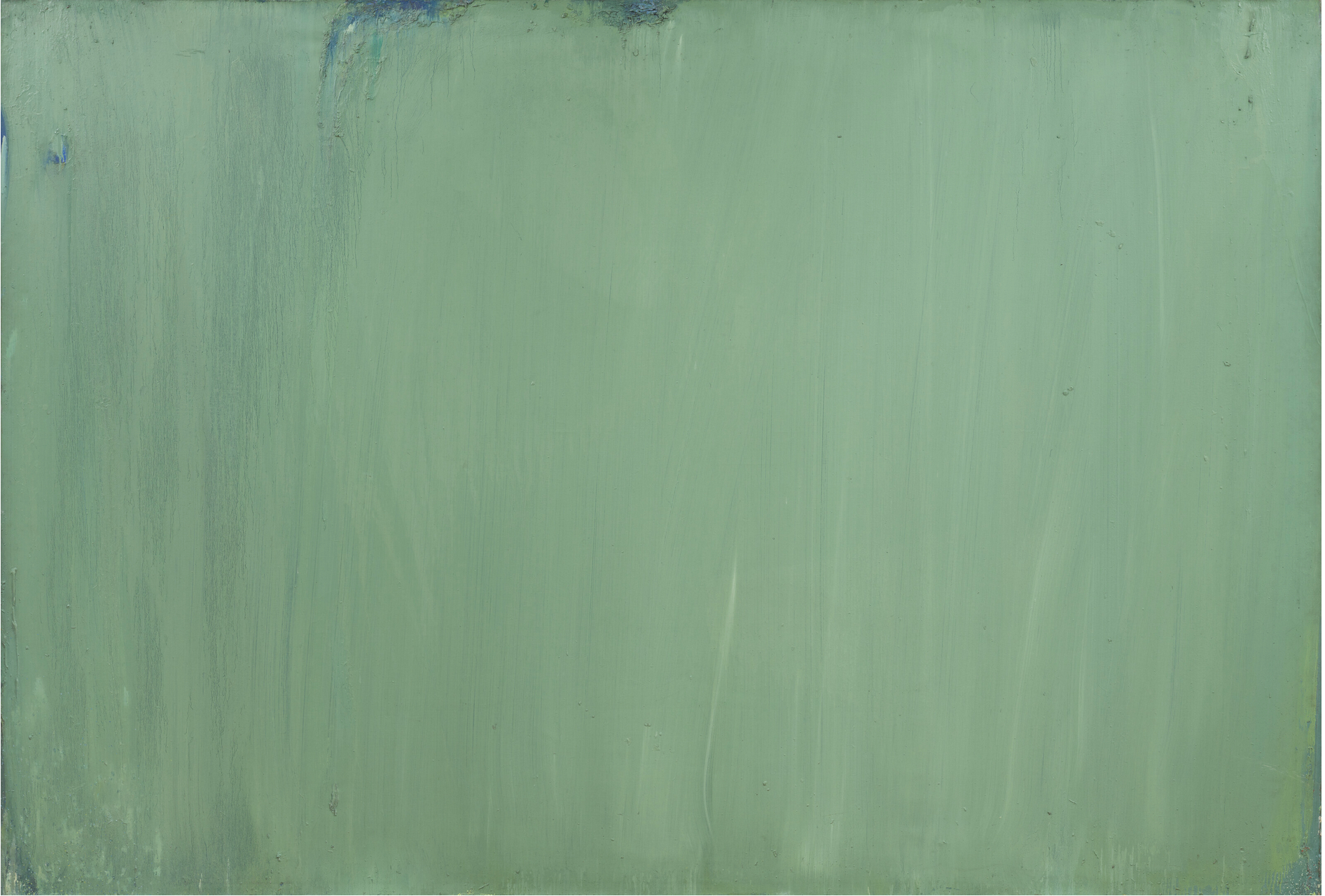Olivier DebréVerte Cachan
1974
Oil on canvas
Signed, titled and dated
75.98 x 111.02 in ( 193 x 282 cm )ZoomInquiry - Verte Cachan, 1974
Provenance
Private Collection, France
Christie's auction, Paris
Literature
Saint-Étienne, Musée d'Art et d'Industrie, Olivier Debré, janvier-mars 1975, No. 82
Antibes, Musée Picasso d'Antibes, Olivier Debré, peintures, juillet-octobre 1975.
Cardiff, National Museum of Wales, Olivier Debré, mars-avril 1977, No. 25
Paris, Musée d'Art Moderne de la Ville de Paris, Olivier Debré, de la peinture au dessin, décembre 1975-février 1976, No. 27
Exhibited
Olivier Debré, Saint-Étienne, Musée d'Art et d'Industrie, 1975
Olivier Debré, peintures, Antibes, Musée Picasso d'Antibes, 1975
Olivier Debré, Cardiff, National Museum of Wales, 1977
Olivier Debré, de la peinture au dessin, Musée d'Art Moderne de la Ville de Paris,1976
Artwork's description
Olivier Debré's painting requires "a concentration of the mind and a directed mobility of the body". His gestures are both instinctual and mastered.
Debré opts here for a simple but rich production method. It covers the canvas with a vertically striated green monochrome surface. At first glance, we feel like an impression of emptiness, but then we realize that in places the green turns into blue or turquoise, as if the skin of the canvas was covered with irregularities or anomalies.
He makes this canvas, in Touraine, his favorite place to paint and experiment. According to him, this place “ It is the door that brings in creation ".
Artist's biography
Olivier Debré was born in 1920 in Paris into a family of doctors and politicians. His father was the renowned pediatrician Robert Debré, and his brother Michel Debré would become Prime Minister under de Gaulle. He inherited his artistic streak from his mother, whose father and uncle were recognized artists.
From a young age, Olivier began drawing, painting, and sculpting. He studied architecture at the École nationale supérieure des beaux-arts in Paris under his uncle Jacques Debat-Ponsan and also attended Le Corbusier's studio. He quickly turned to painting, finding in this art form a direct and emotional expression, especially during the troubled wartime years.
In 1941, Debré presented his first paintings at the Galerie Aubry in Paris. He met Pablo Picasso, who influenced his artistic approach. In 1945, he married Denise Coulon, with whom he had two children. His works evolved towards abstraction, marked by "Signs" that symbolized his emotions. He began exhibiting regularly in various Parisian salons, and his first solo exhibition took place in 1949 at the Galerie Bing.
In the 1950s, his works gained texture and expressiveness. In 1959, he exhibited in the United States, meeting artists like Franz Kline and Mark Rothko. The 1960s saw his work turn towards abstract landscapes, characterized by fields of color and fluid painting. He also created monumental works and stage designs, notably for the Comédie Française and the Hong Kong Opera.
The Loire River, which profoundly inspired him, became a central subject in his work. He often worked in his studio in Touraine, near the river, whose landscapes imbued his paintings. Olivier Debré gained international renown with exhibitions in Japan, the United States, and Europe. Several retrospectives of his work were organized in the 1970s. He also engaged in artistic collaborations in decorative arts, sculpture, ceramics, and stained glass. Elected to the Académie des beaux-arts in 1999, he passed away the same year. Since 2017, the Centre de Création Contemporaine Olivier Debré in Tours has been showcasing his works.
